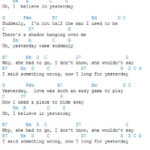For enthusiasts diving into the world of classic Guitar Hero games, particularly Guitar Hero 2 (GH2), controller compatibility can be a point of confusion. It’s a common misconception that PlayStation 2 (PS2) Guitar Hero guitars will seamlessly work across all Guitar Hero titles on the PS2 console. However, when it comes to GH2, that’s not entirely the case. Specifically, using a standard PS2 controller for your guitar mod project with Guitar Hero 2 will likely lead to frustration.
So, what’s the key to unlocking full compatibility, especially for GH2? The answer lies in utilizing a PlayStation 1 (PS1) analog controller. While it might seem counterintuitive, given you’re playing on a PS2, the inner workings of Guitar Hero 2 demand a digital controller with analog stick capabilities – a feature surprisingly inherent in PS1 controllers, despite the seemingly “analog” nature of PS2 gamepads. This distinction is less critical for the original Guitar Hero (GH1), where a modified PS2 pad might suffice. However, for GH2 and subsequent iterations (excluding “Rocks the 80s,” which mirrors GH2’s compatibility), the PS1 controller becomes essential for a fully functional, modded guitar experience.
Why the pickiness of GH2? The exact reasons remain somewhat obscure, but the game’s programming necessitates this specific type of input. Despite the PS2 controller being marketed as analog – even boasting touch-sensitive buttons – it doesn’t fulfill the precise input requirements of GH2 in the same way a PS1 controller does. Therefore, if your goal is to build a custom Guitar Hero guitar compatible with GH2 and potentially later games in the series, your best bet is to start with a PS1 controller as the foundation.
For this guide, we’ll use a 3rd party PS1 pad, like a Typhoon, chosen for its less aesthetically pleasing design, making it a prime candidate for repurposing in a DIY project. Let’s break down the essential wiring connections needed to transform this PS1 controller into a functional Guitar Hero guitar controller:
-
Left D-pad (Always Pressed Down): Solder this connection to simulate a constant “down” press. This crucial step signals to the PS2 system that a guitar controller is connected, which is often indicated by the tutorial menu unfolding in-game when correctly recognized.
-
GND (Ground): This is your ground connection, essential for all switches within your guitar controller. Fortunately, PS1 controller boards offer multiple ground outlets, making wiring more convenient.
-
Up D-pad: Connect this point to your strum bar’s “strum up” switch.
-
L2 Button: This connection, with its two outlets, is designated for the motion sensor, typically used for activating star power in Guitar Hero games.
-
Down D-pad: Wire this to your strum bar’s “strum down” switch.
-
Select Button: Beyond pausing, the Select button is also commonly utilized for activating star power, offering an alternative to the motion sensor.
-
Start Button: A vital connection for pausing the game and accessing the in-game menu.
-
Square Button: This will control your orange fret button. Exercise caution when soldering, as some pads may lack an extra solder pad for this specific button.
-
R2 Button: Connect this to your green fret button.
-
Cross Button (X): This is for your blue fret button.
-
Circle Button: This will activate the red fret button.
-
Triangle Button: Connect this to your yellow fret button.
-
Left Analog Stick Y-axis: This analog input is used for the whammy bar. Connect it as a trimmer between GND (Ground) and VCC (Voltage Common Collector).
-
VCC (Voltage Common Collector): The easiest VCC point to locate on the controller board, providing power for the whammy bar trimmer.
Throughout your wiring process, always refer back to this guide to ensure each connection is accurate.
Optional Tip: Consider removing the rumble motors from the PS1 controller. These motors serve no function in Guitar Hero and can be removed to simplify the internal space and potentially reduce weight.
By following these steps, you can effectively repurpose a PS1 controller to create a fully functional Guitar Hero guitar, ensuring compatibility with Guitar Hero 2 and enjoying a more authentic and responsive gameplay experience.


